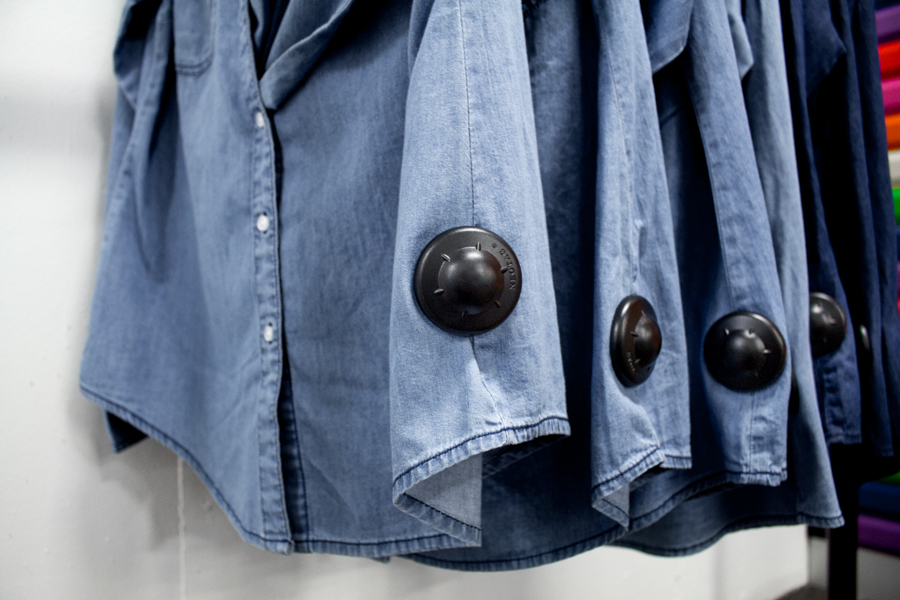The evolution of EAS

First developed in the 1960s, Electronic Article Surveillance is renowned as one of the most effective loss prevention methods available to retailers.
Easy to implement, scalable and featuring tags, labels and antenna to suit any retail scenario, it is utilised by over 73% of retailers, and reduces theft by an estimated 60-80%.
The enduring popularity and effectiveness of EAS is largely driven by its constant evolution. Here’s an insight into the history and evolution of EAS.
A brief history
1964
EAS can be traced back to 1964 and a store manager in Ohio who was frustrated with the ongoing problem of shoplifting. After chasing a man who had pilfered two bottle of spirits, he reportedly remarked that anyone who could figure out a way to deter such thieves would make a fortune.
Overhearing the comment, his cousin Jack Welch embraced the challenge, returning to the store weeks later with a tag taped to a piece of cardboard and a box of electrical components. The creation was rudimentary but demonstrated that if you tried to leave the store with the tag, an alarm would sound.
1966
Fast forward two years and the official honour of inventing EAS security tags actually goes to Arthur J. Minasy, who created and patented a device that could be attached to items offered for sale. The system was based on Radio Frequency (RF) technology and became the basis for his company Knogo.
By the end of that year, security tags were being widely marketed to retailers.
1970s
The 1970s saw major innovations in the world of EAS. By the early 1970s Swept RF technology had been developed, followed by electro-magnetic technology and the ability to create small labels.
1980s
Further innovation continued throughout the 1980s with acousto-magnetic technology joining the EAS line-up.
Operating on a lower frequency, it allowed retailers to thwart shoplifters who tried to get around tag security by using foil booster bags.
Then in 1986 Ink tags arrived, featuring a dye pack that would release ink when thieves tampered with the tag. The first incarnation of the technology wasn’t a huge success, but it would go on to be developed into a highly effective benefit denial strategy that also harnesses the power of EAS.
The 1990s
The 1990s saw the rollout of source tagging where retailers now enjoyed the convenience of tags being applied at the point of manufacture. It was quickly embraced by major US retailers like Home Depot and JC Penney.
2000 and beyond
The past two decades have seen the constant improvement and refinement of EAS.
Security tags and security labels now offer a higher quality solution in a range of sizes that no longer impede consumer interaction. They are also more readily integrated with packaging, are more reliable, and are easier to deactivate at the point of sale.
Much of this innovation has been driven by the availability of new technology and smaller components, but it has also been in response to the improved talents of thieves.
Since the arrival of the internet, would-be shoplifters have had more information at their fingertips than ever before when it comes to thwarting EAS systems.
The upshot is retailers must remain vigilant in upgrading their systems and keep abreast of the latest innovations.
New innovations
Among the most successful innovations in recent years has been the increased strength of magnetic tags including multi-polar options like Neotag Z50.
Designed with maximum security in mind, Neotag features a unique design that ensures it cannot be removed by high powered magnets, mechanical detachers or tag removal hooks, other than the specific Neotag detacher.
New applications
Just as tags and labels have improved over years, so too have the antenna that detect them. Pedestals are now less intrusive, with more installation options. They are more aesthetically pleasing and have the capability of performing tasks beyond loss prevention such as traffic counting and foil bag detection.
Meanwhile, they’re also available for what was one the most challenging site of loss prevention – the fitting room.
Purpose-designed technology like Fitting Room Guard is designed to detect tag detachers within change-rooms, allowing staff to be alerted when a would-be thief attempts the removal of EAS tags.
New data
In an age where retail is driven by data, EAS has evolved to enable retailers to better understand their consumer.
EAS can also now offer additional features like traffic counting that feeds into the overall analytics driving the retail experience.
The art of EAS
EAS has become an essential asset for retail in the ongoing war against theft, but like all areas of retail it’s an arena of constant upgrade, change, and advancement where retailers must ensure they are using the right tool for the job at hand.
You can learn more about selecting the right security tags here.